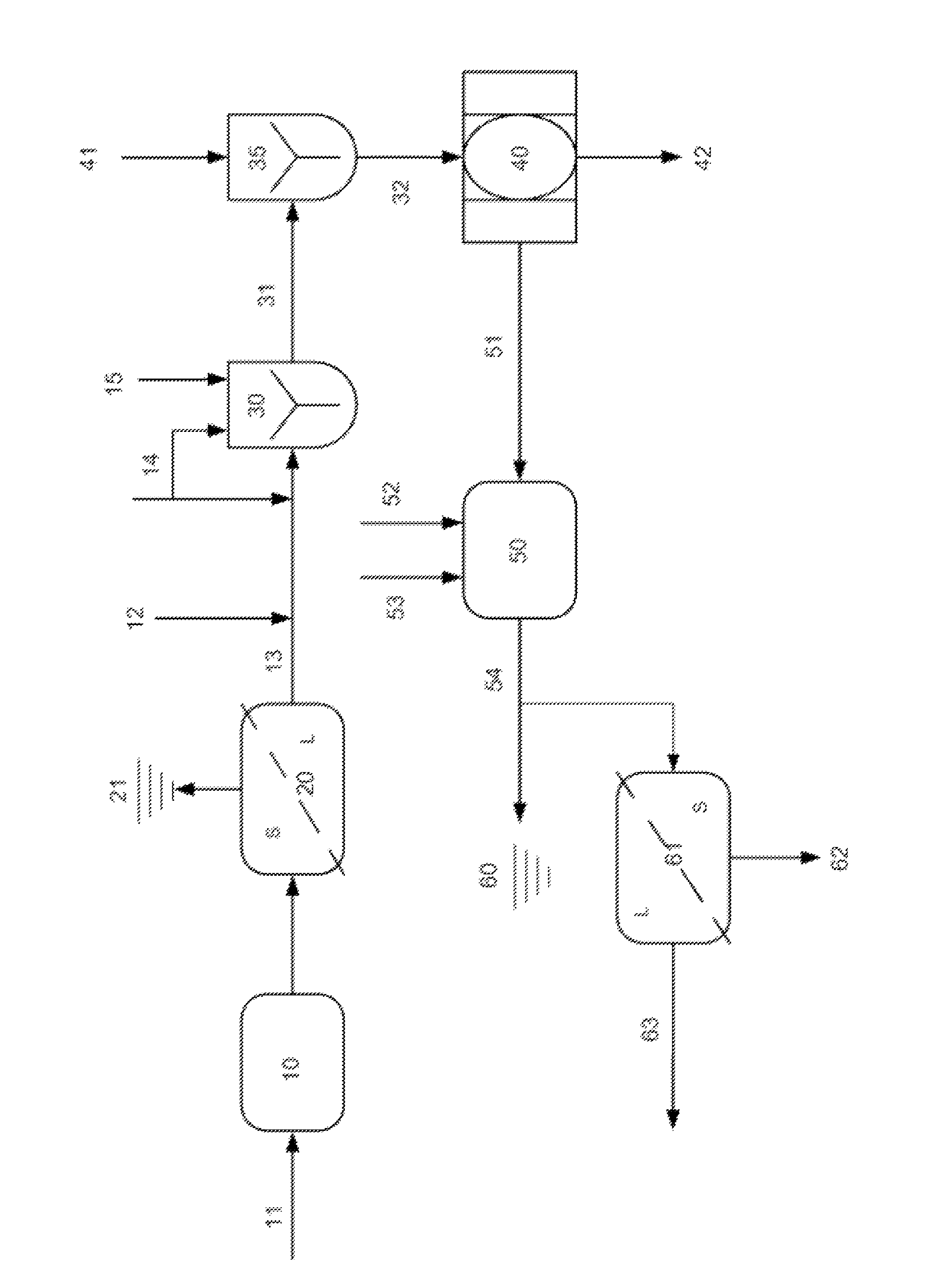Method for treating acid mine drainage
a mine drainage and acidic technology, applied in the direction of quarries, liquid displacement, waste water treatment, etc., can solve the problems of low and low concentration of soluble contaminants, so as to reduce the concentration of heavy metals and soluble contaminants
- Summary
- Abstract
- Description
- Claims
- Application Information
AI Technical Summary
Benefits of technology
Problems solved by technology
Method used
Image
Examples
example 1
[0053]An effluent stream “A” from an excavation site is produced for treatment. The stream has the concentration as indicated in Table 1.
example 2
[0054]A stream “C” is produced for treatment with the concentration as indicated in Table 1.
[0055]
TABLE 1PropertiesStream AStream CpH @~20° C.4.307.90Total dissolved solids (mg / L)845852F− (ppm)217Cl−2111NO3−108.6SO42−920800Al50.580.065AsBBaBiCd0.0340.019Co0.150.13CrCu0.53Fe0.1K3.35.4LiMg98.192.8Mn17.6425.6Mo2.1Ni0.450.26PPbSi14.25.5SnSr0.74.1TiVZn4.011.89
example 3
[0056]Several samples of “A” from Example 1 were treated at varying pH with lime and aeration over 1-hour of reaction time as shown in Table 2. The amount of lime added ranged from 171 ppm (Test #2) to 482 ppm (Test #7). Aeration means air sparging in liter per minute (Lpm). The final concentrations after treatment are shown in Table 3, depicting the reduction in level of a number of metals at a pH of 9 or above.
[0057]
TABLE 2TestLimeInitialFinalAerationNoDescription(ppm)pHpHRate (Lpm)1Control - Sample A (as-is)04.44.302Lime—CaO + Aeration1717.27.32 to 33Lime—CaO + Aeration1958.27.72 to 34Lime—CaO, NO Aeration3419.08.005Lime—CaO + Aeration2469.08.12 to 36Lime—CaO + Aeration3519.88.22 to 37Lime—CaO + Aeration48210.98.72 to 38Lime—CaO + Aeration4139.99.02 to 3
[0058]
TABLE 3Un-treatedTestTestTestTestTestTestTestTestSpecies(ppm)12345678F−21188.810121313149.5Cl−212219192119201923NO3−106.56.76.96.96.76.36.57.5SO42−9201,0001,0001,0009201,0001,0001,0001000PO43−————————Al50.649.20.1180.1973.71...
PUM
| Property | Measurement | Unit |
|---|---|---|
| pH | aaaaa | aaaaa |
| specific gravity | aaaaa | aaaaa |
| retention time | aaaaa | aaaaa |
Abstract
Description
Claims
Application Information
 Login to View More
Login to View More - R&D
- Intellectual Property
- Life Sciences
- Materials
- Tech Scout
- Unparalleled Data Quality
- Higher Quality Content
- 60% Fewer Hallucinations
Browse by: Latest US Patents, China's latest patents, Technical Efficacy Thesaurus, Application Domain, Technology Topic, Popular Technical Reports.
© 2025 PatSnap. All rights reserved.Legal|Privacy policy|Modern Slavery Act Transparency Statement|Sitemap|About US| Contact US: help@patsnap.com


